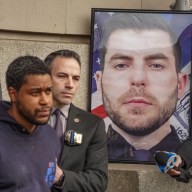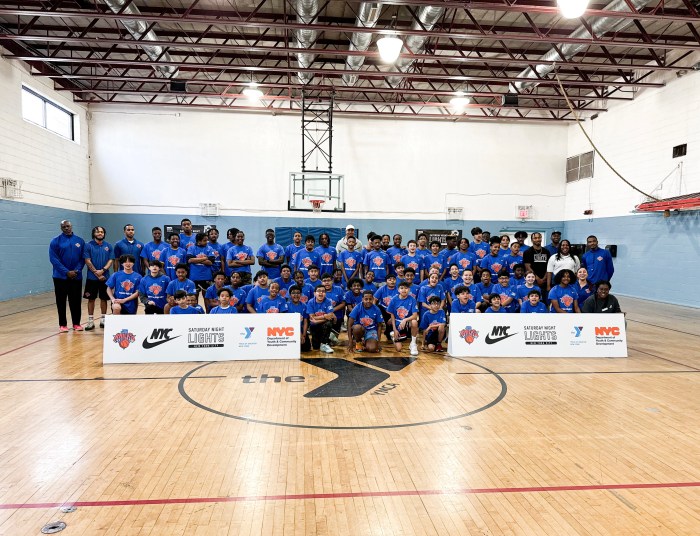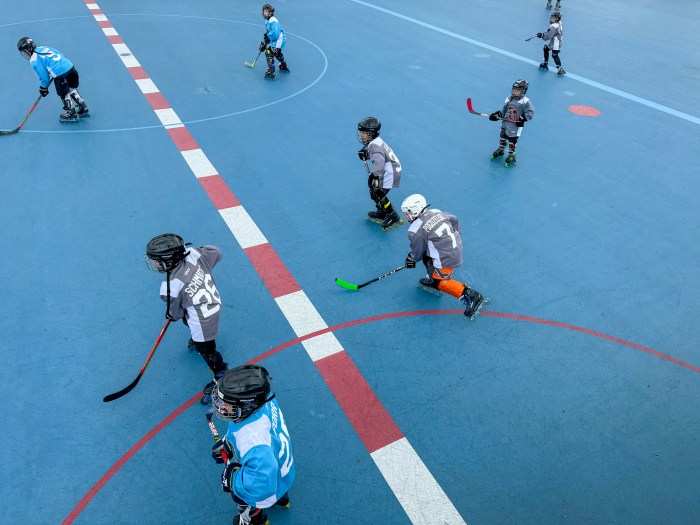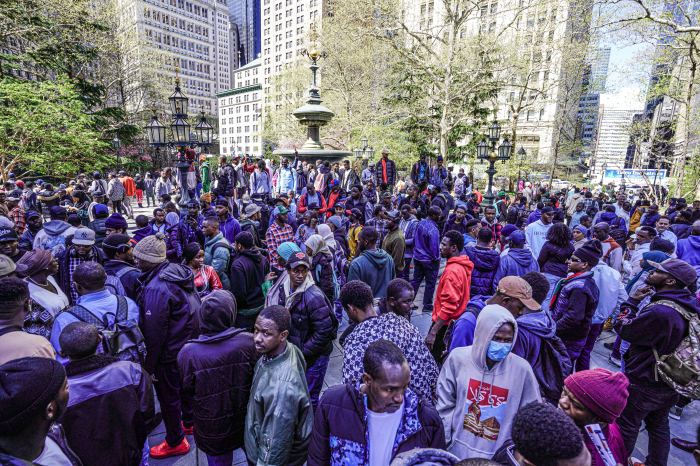Do you remember Reggie Bush taking college football by storm? His track star speed and Barry Sanders-like elusiveness earning him the 2005 Heisman Trophy and leading USC to the 2004 National Championship? Wrong, that never happened. Or what about when the “Fab Five” was changing the game of college basketball forever during back to back Final Four trips? Nope, they never existed.
You can check the record books, these accomplishments have been wiped clean. Not because of any unfair advantage gained from drugs or cheating, but because of money.
Collegiate athletics is built upon the foundation of amateurism. Athletes receive a scholarship in exchange for their play on the field or court, and a scholarship only.
In 2010, the Southeastern Conference (SEC) brought in more than $1 billion. Last year, CBS and TBS signed a 14-year, $10.8 billion deal for the television rights to the NCAA tournament. Men’s college football and basketball combined generate more than the NBA does in annual revenue. These obscene amounts of money are only going to increase.
Where do the athletes fit into this cash cow? Nowhere.
“If we move toward a pay-for-play model — if we were to convert our student athletes to employees of the university — that would be the death of college athletics,” NCAA president Mark Emmert told the New York Times’ Joe Nocera.
This argument, or similar ones, are often bandied about that paying players would sully the image of the student-athlete. The fact that dozens of universities have aided their “student-athletes” achieve grades deceitfully, has already soiled that notion.
William C. Rhoden wrote a book entitled “40 Million Dollar Slaves” marrying present-day professional black athletes’ plight to that of a plantation. And they’re being paid. Slavery analogies can be dangerous. College athletes are obviously not slaves. Author Tyler Branch put it as colonialism, and that may be the more apt term.
Using that analogy, the NCAA is England and college athletes are the 13 colonies. Sure, colonists had rights, but ultimately they answered to England. If they were upset over a new law or tax, they had no recourse because they were not represented at all. England was acting in its own best interests and building a fortune on the backs of colonists who had no choice but to follow. That is until they revolted.
A revolution is taking foot against the NCAA. There is the lawsuit, O’Bannon v. NCAA, filed in 2009 by former college basketball star Ed O’Bannon taking issue with his and other athletes likeness’ being used after their playing days for profit in the sale of DVDs, apparel, video games, etc. Fans and the media are also more than ever realizing the discrepancy between the money college athletics pulls in versus the athletes’ compensation.
And that’s to say nothing between the disparity between scholarships and the actual cost of attending college. The average scholarship fell $3,222 short of providing athletes with the money it costs to attend college, including expenses such as clothing, trips home, etc., during the 2010-11 school year, according to the National College Players Association, an advocacy group for college athletes. Many scholarship athletes come from the inner city or impoverished areas, but the NCAA makes no allowance for poverty. Going on a date, heading to a movie or any of the other activities central to a college student’s life may be impossible for the 85 percent of scholarship athletes that are living below the poverty line, according to the NCPA.
But I’m sure an organization as large as the NCAA that deals with teenagers away from home for the first time would use common sense in their judgments. Well…as former Utah Utes head coach Rick Majerus found out, not quite.
Back in 2003, the coach landed in hot water after it was discovered Majerus had too many “impermissible meals” with his players. This is what the NCAA found to be “impermissible.” A meal bought for then Ute Keith Van Horn as Majerus waited with him for a plane to take him back home the night Van Horn’s father passed away.
Another time, Majerus took a player upset over his brother’s recent suicide to breakfast. The 20 violations came out to approximately $10 per student. These are violations to the NCAA.
OK, so your coach can’t buy you anything, even if it is a consoling sandwich after a death in the family. Athletes should find another way to make money. With school and the team taking up most of the time, a job isn’t much of an option. Maybe selling your conference championship ring or one of your — YOUR — game jerseys. Well, that too is a big mistake.
In 2010, Georgia wide receiver A.J. Green was suspended for the first four games of the season after admitting to selling one of his jerseys to help finance a spring break trip. This amounted to a violation of his amateur status. The NCAA has a very fine line between what constitutes an amateur and professional. There is nothing more college than pawning items to fund spring break. While he was on the sidelines, his jersey continued to be sold in the team store, profiting the university.
Following this, was the well-publicized incident of autographs for tattoos at Ohio State. Some Buckeyes received free or discounted tattoos from a nearby parlor in exchange for autographs and memorabilia. Signing their name ended up costing them five games.
Fine, at least you have a scholarship to provide you with the very basics you need to expand your mind in the classroom. Well, again, not quite.
The NCAA put the University of Nebraska on probation recently for helping their athletes be students. The school was reprimanded by the NCAA for major violations after it was found that oddly enough, the organization that insists on calling college football players student-athletes forbids them from getting anything except the required books for their classes. Anything more, recommended books included, is against the rules.
So for an organization as strict as the NCAA, you would think this paying of athletes is a relatively new phenomenon. If you think the paying of athletes is not integrally woven into the fabric of college sports, think again.
“The recruiting of American college athletes, be it active or passive, professional or non-professional, has reached the proportions of nationwide commerce. In spite of the efforts of not a few teachers and principals who have comprehended its dangers, its effect upon the character of the schoolboy has been profoundly deleterious. Its influence upon the nature and quality of American higher education has been no less noxious. The element that demoralizes is the subsidy, the monetary or material advantage that is used to attract the schoolboy athlete.”
This passage was written in a 1929 report from the Carnegie Foundation entitled “American College Athletics.” The report goes on, “In an extreme case of subsidizing, alumni and business men made contributions ranging from $10 to nearly $1,000 annually to a fund aggregating from $25,000 to $50,000 a year. From this the college expenses of all football players were paid and additional sums, termed “pay checks,” were disbursed to leading performers.”
The game was seemingly built on the back of paying players. These are the times many people will point to as the good old days, when players played for pride.
It is not too far from the argument many critics had of the Olympics allowing professionals to participate.
Let’s see how turning its back on “amateurism” ruined fans’ love of the Olympics. When the games began to allow professional to play, how did that turn out. Just, with probably the most famous basketball team of all time, the Dream Team.
In collegiate athletics, people are rooting for the schools, not amateur play. The passion of the players would remain the same.
Also, there is the fact that many big time athletes are already being paid under the table and have been for as long as there have been tables. This “illegal” pay hasn’t ruined the sports, but make it official and the sport is destroyed?
Tyler Branch wrote in The Atlantic, “The tragedy at the heart of college sports is not that some college athletes are getting paid, but that more of them are not.”
What would this college pay look like? That is a question most often asked when the topic is broached.
The Times’ Nocera, lays out a plan that seems sensible for all sides: install a salary cap, he sets it at a reasonable $3 million for the football teams and $650,000 for basketball. Set the salary minimum at $25,000 per athlete. He would also reduce the number of scholarship football players to 60. These totals would mean each football team would spend $1.5 million on minimum salaries, and have the rest to attract top recruits. Basketball teams would use $325,000 on minimum salaries, and another $325,000 to use on stars.
Why would only football and basketball players be paid? Because they are the ones that bring in the money. If another sport also becomes a license to print money, then by all means add them to the list.
There is also the point that because of restrictions put into place by the NBA and NFL these students really have no other choice but to attend college. They are not allowed entrance into the professional leagues straight out of high school.
Would paying college athletes widen the gap between the haves and have nots? Does Alcorn State have a chance against Florida at the Swamp, right now? How about Stony Book against Duke?
There is another push for athletes to be paid, not from colleges, but from outside companies making money off them. The athletes would not be paid for their play directly, so they could remain “amateurs,” the Nikes, Reeboks and Under Armors of the world could compensate them for endorsement opportunities.
This is to say nothing of the profiteering the NCAA takes part in off former athletes. Even after athletes graduate and move onto the pros or other careers — only 50 of 5,500 Division I men’s basketball players went to the NBA last year — the NCAA is still making money off them.
On the Student-Athlete Statement that every athlete must sign to validate their scholarship, there is a passage that authorizes the NCAA to use player’s names and images.
O’Bannon, who is named on the lawsuit on behalf of many other former college athletes, is trying to tackle this issue.
The lawsuit reads that the NCAA’s use of their likeness deprives former players of their “right of publicity.” Bill Russell joined the lawsuit in 2011 after his likeness was used in the “Tournament of Legends” on EA Sports’ NCAA college basketball game.
NFL players made more than $35 million in royalties last year from EA Sports. Current and former college athletes made nothing.
The complaint alleges that the NCAA violates antitrust laws by denying former players compensation for the use of the “likeness.”
Get a four-year scholarship, make money for the NCAA into perpetuity.
It will likely be many years before a decision is made. While a victory for the plaintiffs is most likely a multi-million dollar settlement, more importantly would be the everlasting change in the relationship between athlete and university.
Ok, now about the BCS…
































